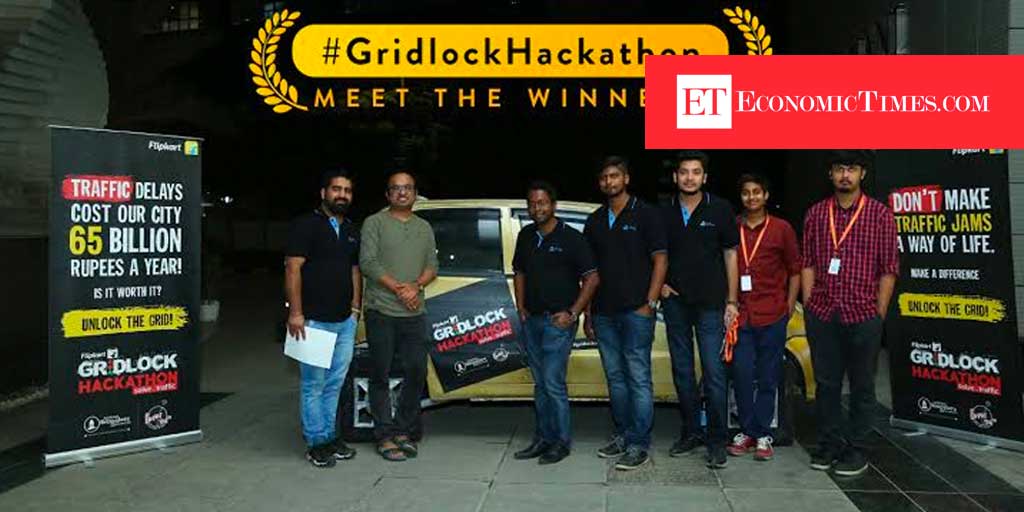Traffic signals never take traffic volume into consideration before they turn red, amber or green. With the help of real-time traffic feeds from Google and Bing Maps Vision, however, they can. Team Affine Anonymous wants to do exactly that.
Posted On : July 13, 2017, 10:16 IST (Source)
Traffic signals never take traffic volume into consideration before they turn red, amber or green. With the help of real-time traffic feeds from Google and Bing Maps Vision, however, they can. Team Affine Anonymous wants to do exactly that.
What’s more, it was the winning idea at Flipkart‘s Gridlock Hackathon, which had invited implementable solutions to address Bengaluru’s perennial traffic problem. The contest witnessed close to 3,000 regis trations from over 1,000 teams including entries from Amazon, Amazon Web Services, Accenture, E&Y, Ola Cabs, Microsoft and Uber.
The project, TrafficSense, has envisioned the creation of a network of selflearning and communicating traffic signal nodes. The solution will be able to reduce waiting time at say, the Silk Board junction, by an estimated 17%, they say.
A mobile application `BY2 rides’, an inverse-Uber model for carpooling, was picked as first runner-up. Another solution `Road Smoothness Detector’, an android app which helps grade roads, emerged was second runner-up in the contest. The app detects and locates obstructions on the roads such as potholes, humps and many other such aspects that degrade road quality.
Besides these three ideas, the jury comprising Flipkart CEO Binny Bansal, Namma Bengaluru Foundation CEO Sridhar Pabbisetty and DCP (East) Abhishek Goyal picked eight solutions.This includes improvement of traffic regulation and on-demand public transport.


















